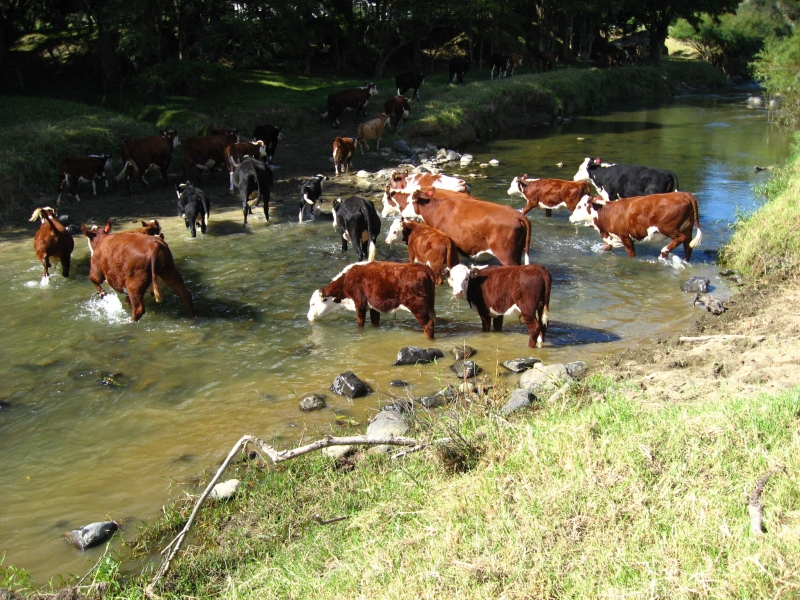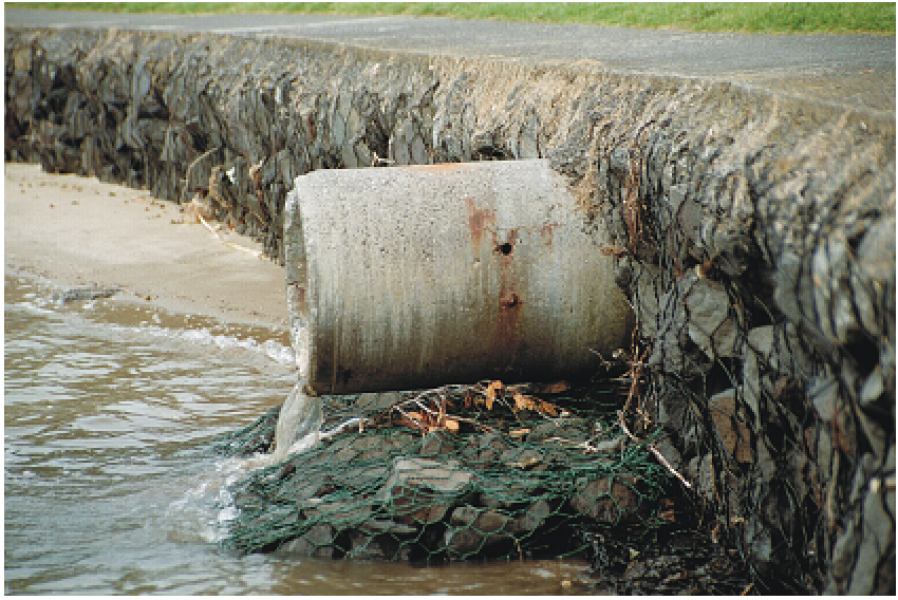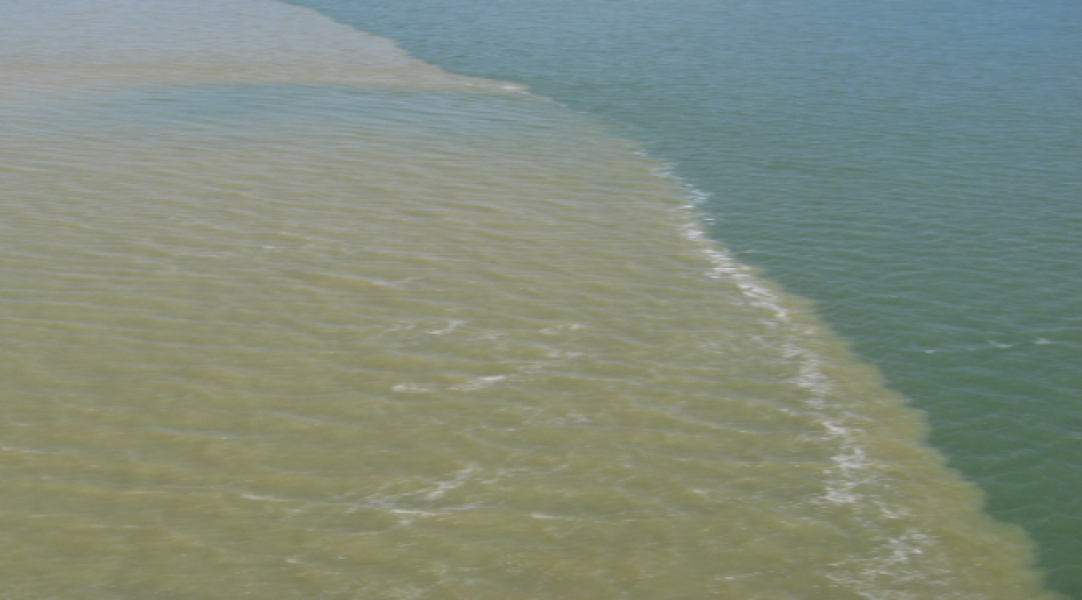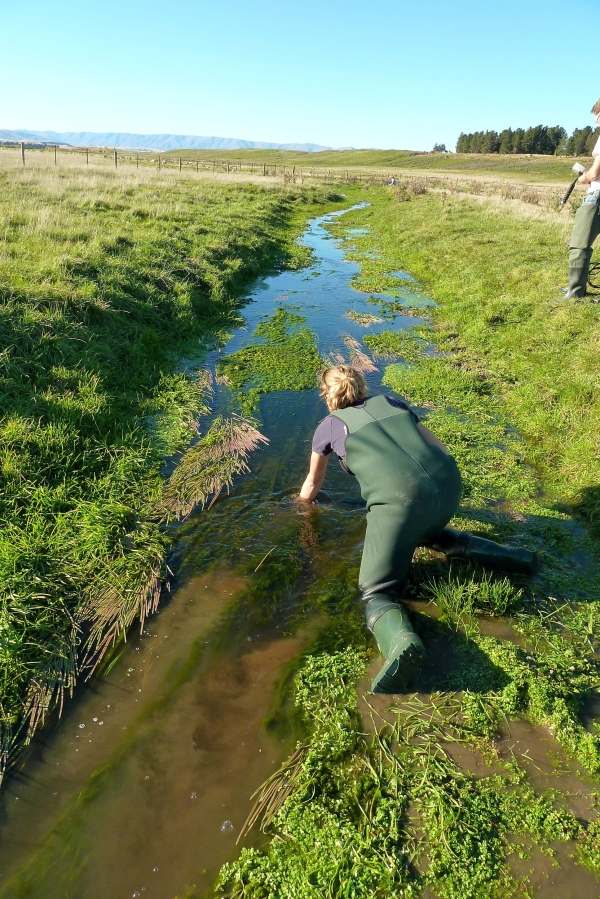Landuse intensification and changes are taking a toll on our freshwater and estuarine ecosystems. NIWA research is developing knowledge and science-based tools for better management of these contaminants.
Best-management practices so far include industry initiatives, community involvement and the development of regional water quality standards. However diffuse-source pollutants (sediments, nutrients, heavy metals and pesticides) are still taking a toll on freshwater and estuarine ecosystems. This not only damages ecosystem integrity but also has the potential to limit economic growth through impairing the natural services and functions that ecosystems provide to society. The aim of this research programme is to develop knowledge and science-based tools for better management of aquatic ecosystems. These will take account of cumulative effects of contaminant stressors, multiple stressor interactions, and ecosystem tipping points. A key goal is to develop the knowledge and tools to support the implementation of limits-based management as outlined in the Government's Freshwater Reform 2013 and beyond.
Our team brings together researchers from NIWA, Cawthron Institute and the University of Otago. Working across a range of sites, from Canterbury (Lake Benmore, Culverden Basin), Kaipara Harbour, Hawkes Bay (Tukituki River), Manawatu, Otago (Manuherikia River), and a range of lakes, including Lake Taupo.
Working with our Māori research partners at the science-cultural interface, we are developing a formal system for organising information from Ngā Waihotanga Iho (iwi estuarine monitoring toolkit), mātauranga Māori and Western science. This is centred on Kaipara Te Moana, where work with our research partners is serving as a model for future national uptake.
The programme has five objectives:
- determine how ecosystem structure, function and resilience respond to stress gradients and multiple stressors, and identify ecosystem tipping points. This is needed to inform the establishment of limits, and to underpin scenario modelling, which informs consent decision-making and auditing.
- determine the processes that transform contaminants as they are transported off the land and down watercourses, and develop associated methods for converting contaminant loads into ecologically relevant metrics. This knowledge is required to translate outputs from contaminant-generation/mitigation models into ecological effects in aquatic ecosystems.
- develop techniques for evaluating resource capacity of receiving waters in terms of contaminant load limits, including accounting for multiple stressor interactions, spatially distributed contaminant sources, and different timescales of effect. These techniques are intended to be applied in limits-based management aimed at reducing cumulative effects of contaminants.
- identify opportunities for, and resolve obstacles to, applying considerations of resource capacity in regional plans under the RMA, including ways of managing uncertainty in knowledge.
- develop a formal system for organising information from Ngā Waihotanga Iho (iwi estuarine monitoring toolkit), mātauranga Māori, and Western science, which will support the expression of kaitiakitanga by Māori and their engagement with regional planning processes.
Programme activities so far include:
- Examining the effects of the nutrient enrichment and elevated fine sediment, two key agricultural stressors. Determining their individual and combined effects on stream health, with a focus on stream algae and cyanobacteria (Wagenhoff et al., 2013. Patterns of benthic algae and cyanobacteria along twin‐stressor gradients of nutrients and fine sediment: a stream mesocosm experiment. The results highlight the importance of intact or restored buffer strips, both in reducing fine sediment input and in maintaining cooler water temperatures (Piggott et al., 2012. Multiple stressors in agricultural streams: a mesocosm study of interactions among raised water temperature, sediment addition and nutrient enrichment.
- One of our biggest challenges is addressing the 'so what' question. To communicate the value of New Zealand estuaries, we contributed to a book produced by Landcare Research on Ecosystem Services in New Zealand (In Press). In it we explain that estuaries are complex ecological systems that mark the transition between freshwater and the open coast. They cover a diverse cross-section of habitats supporting a wide range of human activities and values, and are an integral part of the cultural identity of New Zealanders. As yet there is no national or regional stocktake of the estuarine ecosystem services that we benefit from.
- We are researching the processes that determine oxygen depletion in lake bottom waters and the effects it has. This year we published the following paper: Verburg et al., 2013. Nutrient ratios, differential retention and limitation in a deep oligotrophic lake. We compared data collected in 1992–1996 with data from the past three years in Lake Tutira, Hawke's Bay. Surface water was warmer by about 1 degree in 2008–2011 than in 1992–1996, reflecting a significant increase in air temperature in the region. Deeper water had warmed less, indicating reduced vertical mixing, which may explain the lower oxygen and higher dissolved phosphorus concentrations in bottom waters. In addition, higher nutrient concentrations may be the result of increased nutrient loading from the catchment, increasing the eutrophic state of the lake.
- As landuse intensifies around the country there are increasing calls for nitrogen loads to be allowed to increase from current levels, on the understanding that phosphorus concentrations are probably controlling periphyton accumulations. However, we have discovered that toxic benthic cyanobacteria mats (Phormidium) proliferate under ample N and limited P, which completely contrasts the situation in lakes with planktonic cyanobacteria.Our mechanistic model of periphyton growth and nutrient attenuation has been linked to a conceptual model of nutrient loss from Ruataniwha Plains farms to the Waipawa and Tukituki Rivers. The model has been used to provide information on the likely consequences of land development and removal of treated sewage discharges for nitrate toxicity and periphyton biomass throughout the middle and lower reaches of the Tukituki mainstem.
- We are developing methods to simplify the determination of the bioavailable trace metals and to fully characterize the constituents in water that influence bioavailability. We have developed software to estimate trace-metal binding parameters in a more systematic and unbiased way than commonly done before. Wells et al., 2013. New approach to analysis of voltammetric ligand titration data improves understanding of metal speciation in natural water. Limnology and Oceanography Methods.
- Examining the individual and combined effects of deposited fine sediment and glyphosate, the world's most widely used herbicide, on stream community structure and ecosystem processes. We found that glyphosate is less likely to be problematic for benthic invertebrates or algae than fine sediment from catchment erosion. The results emphasise the importance of considering both structural and functional indicators of ecosystem response to stressors: Magbanua et al., 2013. Understanding the combined influence of fine sediment and glyphosate herbicide on stream periphyton communities. Magbauna et al., 2013. Individual and combined effects of fine sediment and the herbicide glyphosate on benthic macroinvertebrates and stream ecosystem function.
- We published a paper in a special issue of Microchemical Journal on trace metal chemistry in the pristine freshwater Lake Hauroko (Fiordland) which includes the first cobalt data published for an uncontaminated New Zealand lake. Comparisons with northern hemisphere and other New Zealand lakes confirm the very pristine character of this lake and highlight the ability to use Lake Hauroko as a natural laboratory to study biogeochemical cycles of trace elements and nutrients: Sanders et al., 2012. Trace Metal Chemistry in the Pristine Freshwater Lake Hauroko, Fiordland, New Zealand.
- We have described the extreme visual clarity and optical purity of a subalpine lake. Blue Lake (Rotomairewhenua), remotely located in Nelson Lakes National Park, has the highest visual range of any freshwater yet reported (74 m average). Our scientific findings on the optics of this water body have inspired a photo-essay by internationally renowned photographer Michel Roggio in the Freshwater project and attracted international press interest.
- We are testing the proposition that fine-sediment effects are best managed by light attenuation, which has far-reaching implications for State of the Environment monitoring and diffuse-source-pollution management. Light attenuation is an important attribute that affects water values, and it is easy and cheap to measure: Elliot et al., 2013. Load based approaches for modelling visual clarity in streams at regional scale.
- To support limits-based management of estuaries, we have developed a method for calculating catchment sediment load limits. Our method is based on manipulating the sediment budget and takes advantage of the inherent complexity of the estuary and its connections to different sediment source regions in the catchment. We show that, in all but the simplest of cases, there is never just one way to achieve estuary sedimentation limits. This opens up management opportunities, since some ways of achieving limits will be better than others, and management can focus on finding sediment load limits that do not fail any sedimentation limits and that are achievable, affordable and efficient: Green 2013. Catchment sediment load limits to achieve estuary sedimentation targets.
- We continue to work on improving contaminant source-to-sea models by researching the physical processes that transport, transform, disperse and accumulate contaminants as they are washed off the land and transported towards estuaries. We are focusing this work on tidal creeks, which are mixing zones that sit between freshwater and saltwater, and which filter and sequester contaminants in various ways: Green and Hancock, 2012. Sediment transport through a tidal creek.
- We have undertaken a desktop survey of all regional water plans in New Zealand and surveyed regional planners from all regional councils in order to establish a comprehensive view of the extent to which limits are currently set in regional plans and to identify the key obstacles and opportunities for fully implementing the National Policy Statement for Freshwater Management. The analysis of the survey results provides an important baseline for understanding obstacles from a planner's perspective and for identifying potential solutions to these obstacles: Snelder et al., 2013. The role of science in setting water resource use limits: a case study from New Zealand.
- We have continued to inform policy development via contributions to the third-round Land and Water Forum (LAWF) process including advice to the LAWF Secretariat, MfE and MPI. Culminating in the November 2012 publication of the 3rd report of the Land and Water Forum.
- We have been heavily involved in work developing the National Objectives Framework (NOF) for freshwater and estuaries. Our contributions to date have included workshopping the NOF framework concept. Throughout this workshopping process there has been discussion and acknowledgement of the link between defining objectives using the NOF process and the next step of using technical knowledge and tools to identify limits to resource use (e.g., contaminant load limits and other methods) that would allow the freshwater objectives to be achieved through time.
- The iwi estuarine monitoring toolkit Ngā Waihotanga Iho (NWI) and the supporting web-based data management system were successfully rolled-out with Te Uri o Hau Settlement Trust, four Northern Kaipara Harbour secondary schools, Te Uri o Hau Tūpuna marae and kaitiaki. Ngā Waihotanga Iho has been integrated into Te Uri o Hau Settlement Trust's Cultural Education Trail and Marae Biodiversity Project. Te Uri o Hau and NIWA have developed a work plan for embedding NWI into the science curriculum at the four participating schools (Rodney College, Otamatea High School, Ruawai College and Dargaville High School), and the aim is to extend the programme throughout Te Uri o Hau's rohe. Through this work, we are developing strategies and guidelines for marae, hapū, iwi and community groups who wish to use NWI.




